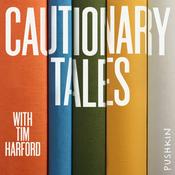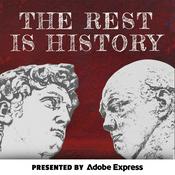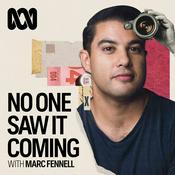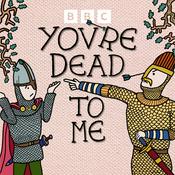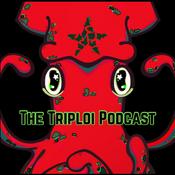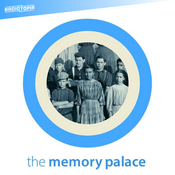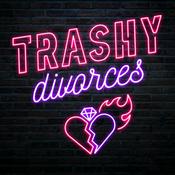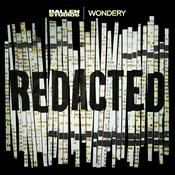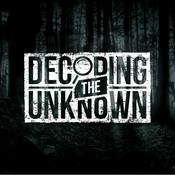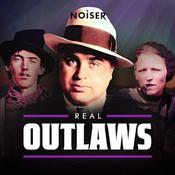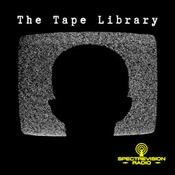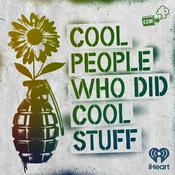2623 episodes

Two 504 Figures: Kitty Cone and Brad Lomax
05/01/2026 | 39 mins.
Kitty Cone and Brad Lomax were key players in the 1977 sit-ins which pressured the Department of Health and Human Services to establish policies to implement section 504 of the 1973 Rehabilitation Act. Research: R.8070 - Rehabilitation Act of 1973. https://www.congress.gov/bill/93rd-congress/house-bill/8070 Grim, Andrew. “Sitting-in for disability rights: The Section 504 protests of the 1970s.” National Museum of American History. https://americanhistory.si.edu/explore/stories/sitting-disability-rights-section-504-protests-1970s “Celebrating Kitty Cone: 1944-2015.” https://dredf.org/celebrating-kitty-cone-1944-2015/ Feingold, Lainey. “Disability Rights Leader Kitty Cone Dies at 70.” BeyondChron. 3/23/2015. https://beyondchron.org/curtis-kitty-cone-disability-rights-hero-dead-at-70/ Gardiner, Kathryn S. “Forgotten Foremothers: Kitty Cone - Disability Activist.” League of Women Voters of Indiana. 7/9/2022. https://www.lwvin.org/content.aspx?page_id=5&club_id=42001&item_id=77659 Lu, Wendy. “Overlooked No More: Kitty Cone, Trailblazer of the Disability Rights Movement.” New York Times. 3/26/2021. https://www.nytimes.com/2021/03/26/obituaries/kitty-cone-overlooked.html Center for Learner Equality. “Brad Lomax – Uniting the Civil Rights and Disability Rights Communities.” https://www.centerforlearnerequity.org/news/brad-lomax-uniting-the-civil-rights-and-disability-rights-communities/ Essien, Markus, director and producer. “Renegades: Brad Lomax.” PBS. https://www.pbs.org/wnet/americanmasters/brad-lomax-documentary/33589/ Connelly, Eileen AJ. “Overlooked No More: Brad Lomax, a Bridge Between Civil Rights Movements.” New York Times. 7/20/2020. https://www.nytimes.com/2020/07/08/obituaries/brad-lomax-overlooked.html See omnystudio.com/listener for privacy information.

SYMHC Classics: Andrew Crosse
03/01/2026 | 34 mins.
This 2021 episode covers Andrew Crosse, who observed a strange thing happening on an electrified rock in his lab in the early 1800s, and was catapulted into the public spotlight.See omnystudio.com/listener for privacy information.

Behind the Scenes Minis: Bullet Journal Dinosaur
02/01/2026 | 24 mins.
Holly and Tracy talk about the pros and cons of self-help writing and whether Ben Franklin would like bullet journaling. They then talk about a past trip they took to Walt Disney World. See omnystudio.com/listener for privacy information.

New Year’s Eve Iguanodon Party
31/12/2025 | 34 mins.
In 1853, a high-profile London dinner party was held inside a life-sized mold of an iguanodon. Research: Cain, Joe. “New Year’s Eve Dinner in the Iguanodon at Crystal Palace 31 December 1853.” https://profjoecain.net/dinner-iguanodon-crystal-palace-dinosaurs/ Cain, Joe. “Top Questions About New Year’s Eve Dinner in Iguanodon at Crystal Palace.” https://profjoecain.net/top-questions-about-new-years-eve-dinner-iguanodon-crystal-palace-mould-sculpture/ Carlson, Laura. “Episode 5: A Victorian Dinosaur Dinner.” The Feast. https://www.thefeastpodcast.org/episode-5-a-victorian-dinosaur-dinner Friends of the Crystal Palace Dinosaurs. “Dinner in the Iguanodon.” 7/21/2013. https://cpdinosaurs.org/blog/post/dinner-in-the-iguanodon Friends of the Crystal Palace Dinosaurs. “How were the Crystal Palace Dinosaurs made?” 5/13/2016. https://cpdinosaurs.org/blog/post/how-were-the-crystal-palace-dinosaurs-made Routledge & Co., publishers. “Routledge's guide to the Crystal Palace and park at Sydenham.” Crystal Palace. 1854. https://archive.org/details/routledgesguidet00grou/ Geological Society of London Blog. “The First Dinosaurs’ Dinner.” 4/15/2021. https://blog.geolsoc.org.uk/2021/04/15/the-first-dinosaurs-dinner/ Hawkins, B. Waterhouse. “On Visual Education, As Applied to Geology.” Journal of the Society of Arts. Vol. II No. 78. 5/19/1854. Illustrated London News. “The Crystal Palace, at Sydenham.” 1/7/1854. https://archive.org/details/sim_illustrated-london-news_1854-01-07_24_662/page/21/mode/1up McCarthy, Steve. “The Crystal Palace Dinosaurs: The Story of the World’s First Prehistoric Sculptures.” The Crystal Palace Foundation. 1994. McCarthy, Steve. "Hawkins, Benjamin Waterhouse (1807–1894), natural history artist and sculptor." Oxford Dictionary of National Biography. October 08, 2009. Oxford University Press. Date of access 5 Dec. 2025, https://www-oxforddnb-com.proxy.bostonathenaeum.org/view/10.1093/ref:odnb/9780198614128.001.0001/odnb-9780198614128-e-54370 Osterloff, Emily. “The world's first dinosaur park: what the Victorians got right and wrong.” Natural History Museum. https://www.nhm.ac.uk/discover/crystal-palace-dinosaurs.html Owen, Richard. “Geology and inhabitants of the ancient world.” Crystal Palace Company. 1854. https://archive.org/details/geologyinhabitan00owen Peck, Robert McCracken. "The art of bones: British artist Benjamin Waterhouse Hawkins, who sparked dinosaur mania in the nineteenth century, still influences how natural history museums represent prehistoric life today." Natural History, vol. 117, no. 10, Dec. 2008, pp. 24+. Gale Academic OneFile, link.gale.com/apps/doc/A189832561/GPS?u=mlin_n_melpub&sid=bookmark-GPS&xid=f6c80589. Accessed 5 Dec. 2025. Phillips, Samuel. “Guide to the Crystal Palace and Park.” Crystal Palace Library. 1854. https://archive.org/details/guidetocrystalpa00phil_0 Rack, Yannic. “How a Victorian Dinosaur Park Became a Time Capsule of Early Paleontology.” Smithsonian. 8/29/2023. https://www.smithsonianmag.com/travel/how-a-victorian-dinosaur-park-became-a-time-capsule-of-early-paleontology-180982799/ The History Press. “The Victorian dinner inside a dinosaur.” https://thehistorypress.co.uk/article/the-victorian-dinner-inside-a-dinosaur/ Witton, Mark and Ellinor Michel. “Crystal Palace dinosaurs: how we rediscovered five missing sculptures from the famous park.” The Conversation. 5/20/2022. https://theconversation.com/crystal-palace-dinosaurs-how-we-rediscovered-five-missing-sculptures-from-the-famous-park-182573 See omnystudio.com/listener for privacy information.

Self-help Books Throughout History
29/12/2025 | 41 mins.
The origins of self-help writing are often traced back to ancient times. This episode talks through some early versions of it, the goal-setting advice of a founding father, and the beginnings of the modern self-help genre. Research: Brady, Diane. “Charles Manson’s Turning Point: Dale Carnegie Classes.” Bloomberg Businessweek. July 22, 2013. https://web.archive.org/web/20130925204803/http://www.businessweek.com/articles/2013-07-22/charles-mansons-turning-point-dale-carnegie-classes Britannica Editors. "Lunyu". Encyclopedia Britannica, 29 Jan. 2019, https://www.britannica.com/topic/Lunyu Britannica Editors. "Norman Vincent Peale". Encyclopedia Britannica, 27 May. 2025, https://www.britannica.com/biography/Norman-Vincent-Peale Carnegie, Dale. “How to Win Friends and Influence People.” London. Vermillion. Digital: https://dn720004.ca.archive.org/0/items/english-collections-1/How%20To%20Win%20Friends%20And%20Influence%20People%20-%20Carnegie%2C%20Dale.pdf Fairbanks, Douglas. “Laugh and Live.” New York. Britton Publishing Company. 1917. https://www.gutenberg.org/cache/epub/12887/pg12887.txt Fontaine, Carole R. “A Modern Look at Ancient Wisdom: The Instruction of Ptahhotep Revisited.” The Biblical Archaeologist, vol. 44, no. 3, 1981, pp. 155–60. JSTOR, https://doi.org/10.2307/3209606 Franklin, Benjamin. “The Autobiography of Benjamin Franklin.” HENRY HOLT AND COMPANY. 1916. https://www.gutenberg.org/files/20203/20203-h/20203-h.htm#X Battiscombe G. “THE INSTRUCTION OF PTAH-HOTEP AND THE INSTRUCTION OFKE'GEMNI: THE OLDEST BOOKS IN THE WORLD.” London. John Murray. 1906. https://www.gutenberg.org/files/30508/30508-h/30508-h.htm Lilienfeld, Scott O. and Hal Arkowitz. “Can positive thinking be negative?” Scientific American. May 1, 2011. https://www.scientificamerican.com/article/can-positive-thinking-be-negative/ Ray, J. D. “Egyptian Wisdom Literature.” Wisdom in Ancient Israel. Ed. John Day, Robert P. Gordon, and Hugh Godfrey Maturin Williamson. Cambridge: Cambridge University Press, 1995. 17–29. Stableford, Brian. “Samuel Smiles.” Ebsco. 2023. https://www.ebsco.com/research-starters/history/samuel-smiles Seneca, Lucius Annaius, and Garth D. Williams (tr.). “On the Shortness of Life.” https://ia601705.us.archive.org/25/items/SenecaOnTheShortnessOfLife/Seneca%20on%20the%20Shortness%20of%20Life.pdf Tabor, Nick. "Dale Carnegie". Encyclopedia Britannica, 20 Nov. 2025, https://www.britannica.com/biography/Dale-Carnegie See omnystudio.com/listener for privacy information.
More History podcasts
Trending History podcasts
About Stuff You Missed in History Class
Listen to Stuff You Missed in History Class, Rear Vision — How History Shaped Today and many other podcasts from around the world with the radio.net app

Get the free radio.net app
- Stations and podcasts to bookmark
- Stream via Wi-Fi or Bluetooth
- Supports Carplay & Android Auto
- Many other app features
Get the free radio.net app
- Stations and podcasts to bookmark
- Stream via Wi-Fi or Bluetooth
- Supports Carplay & Android Auto
- Many other app features


Stuff You Missed in History Class
download the app,
start listening.

